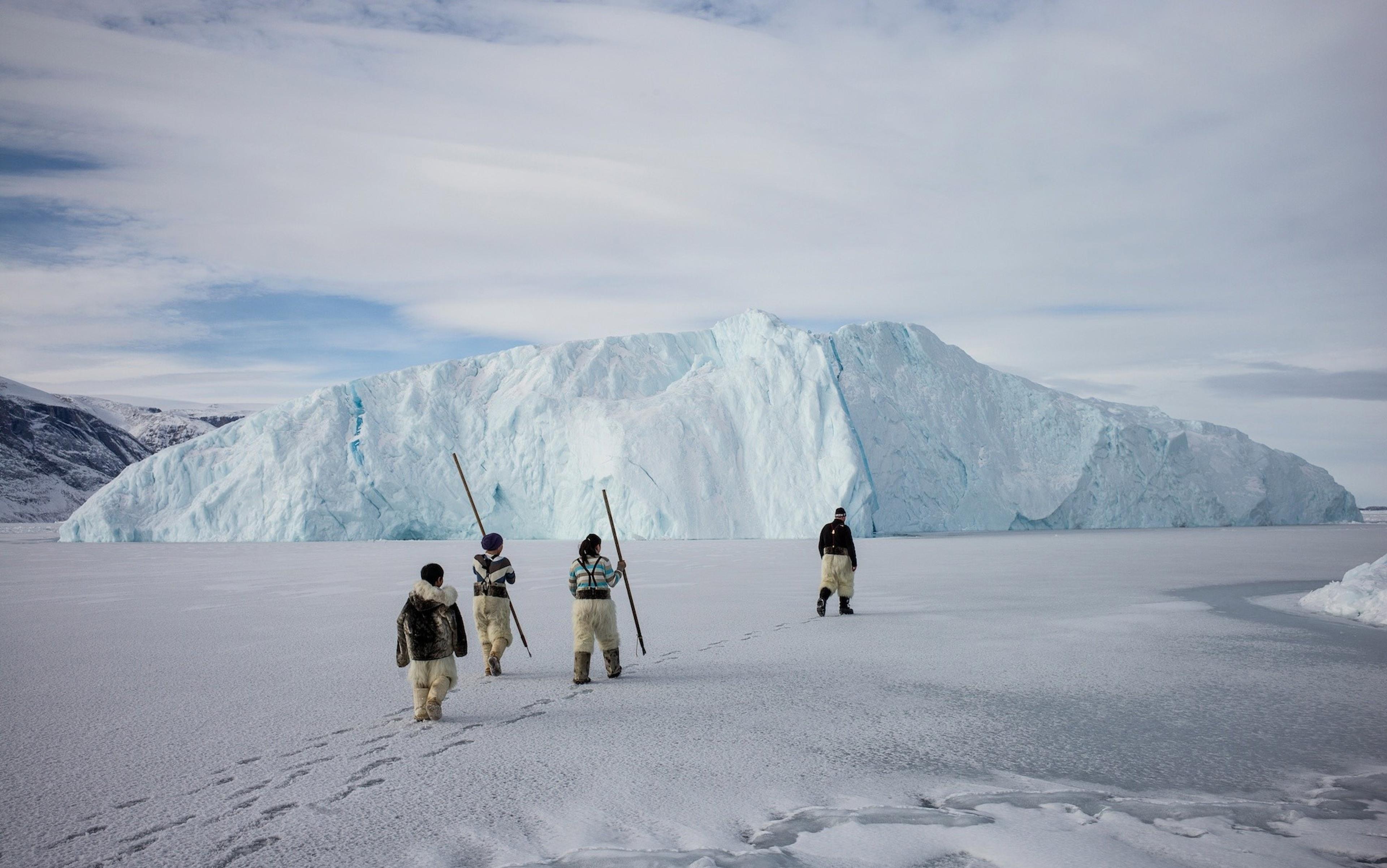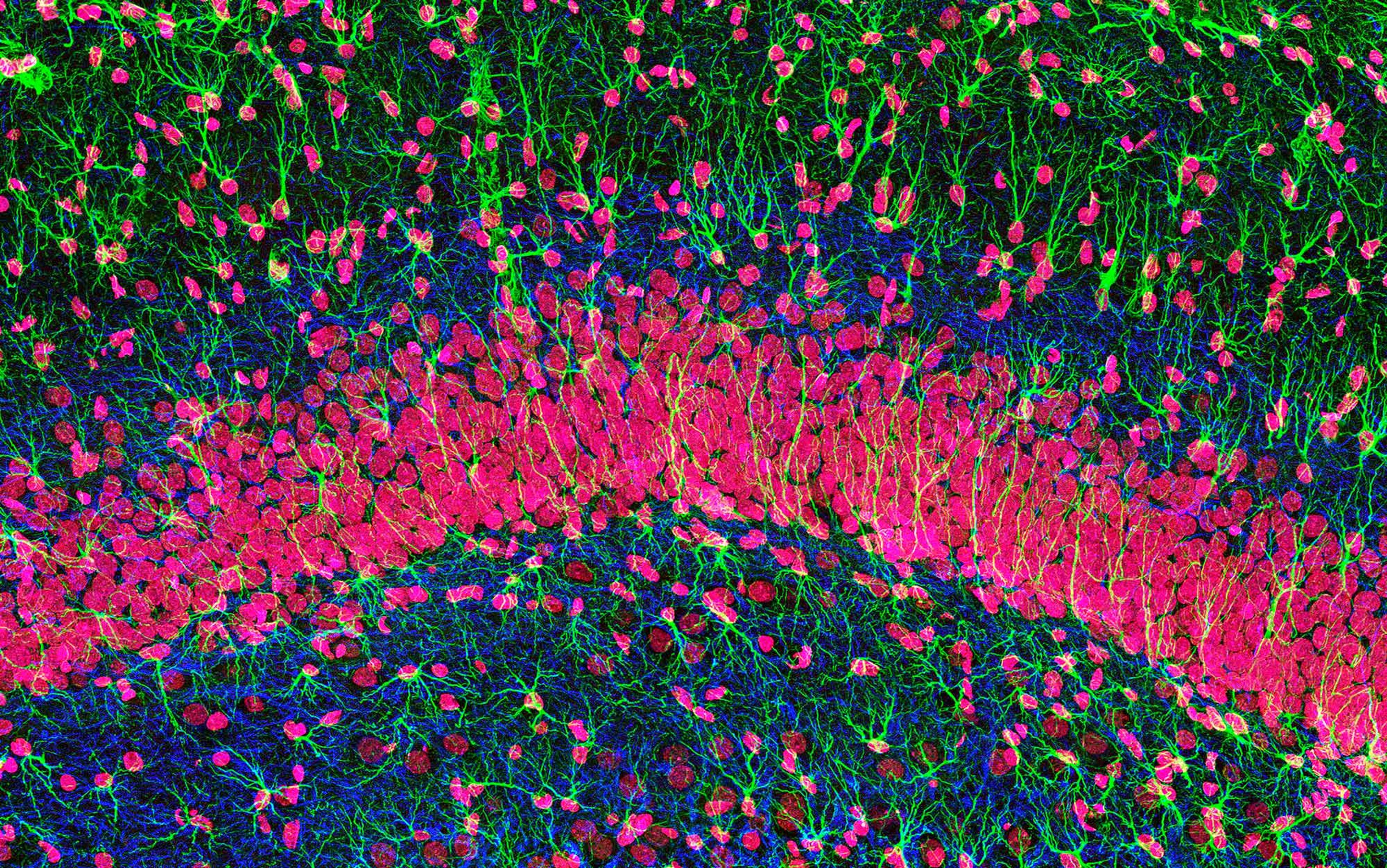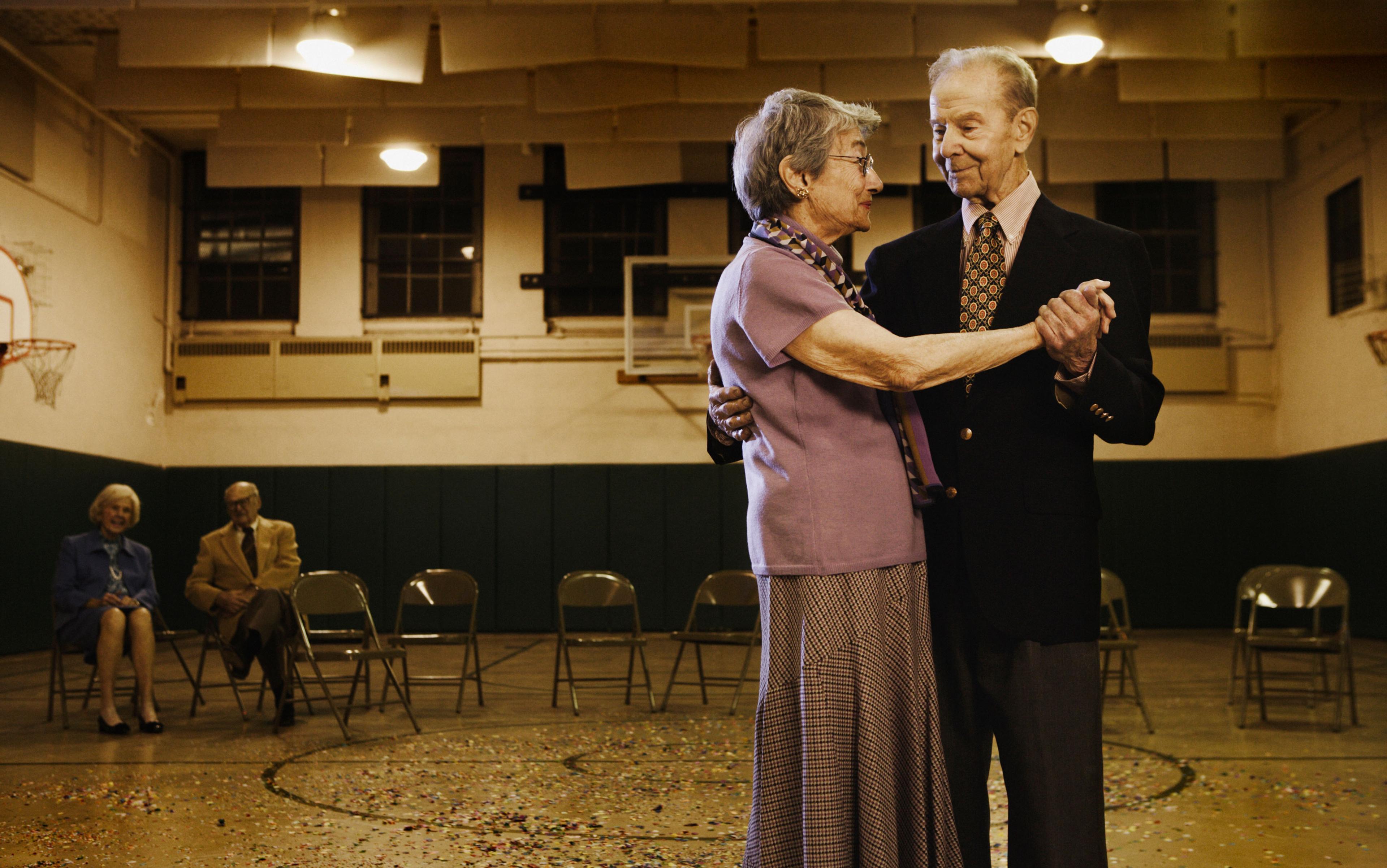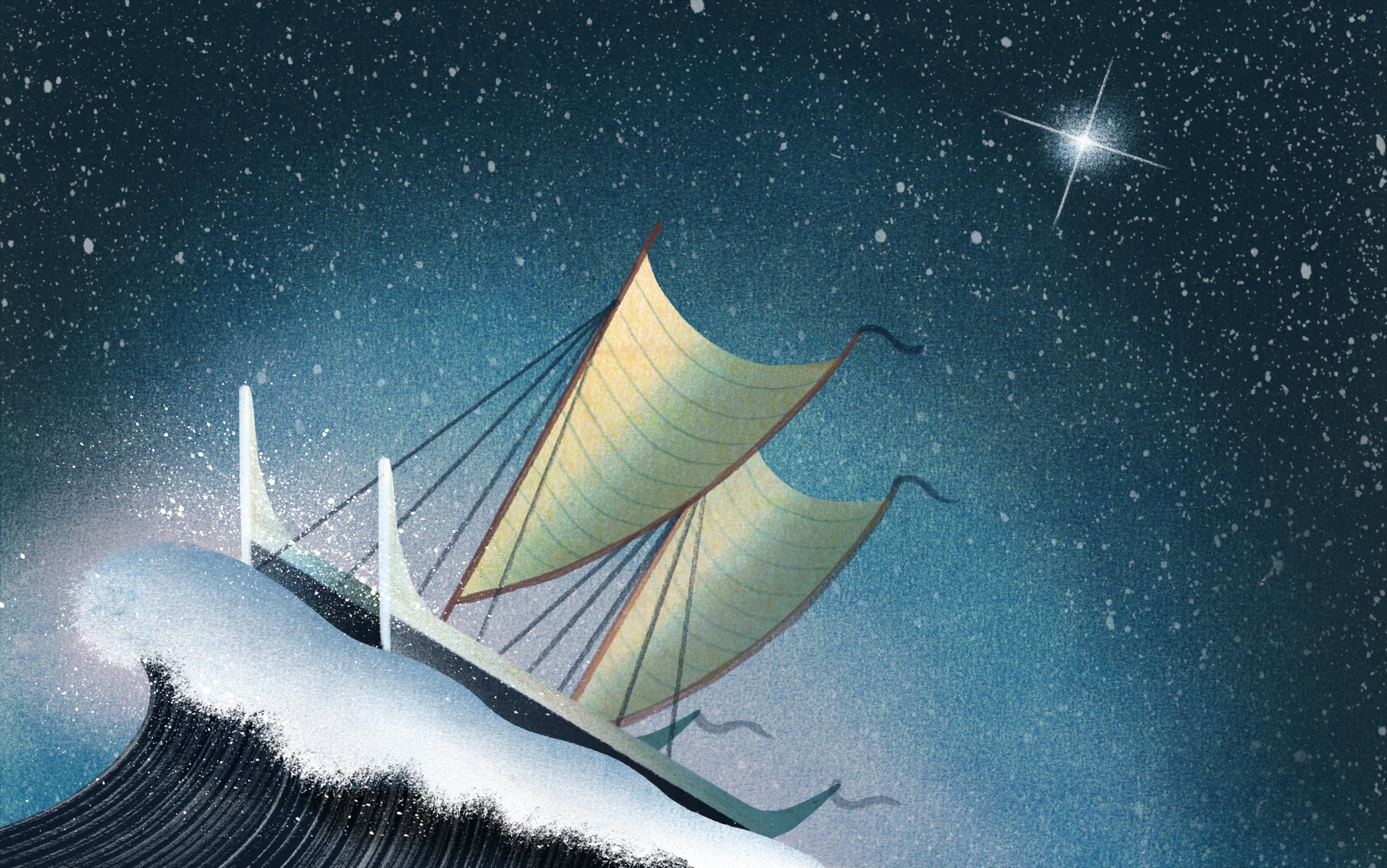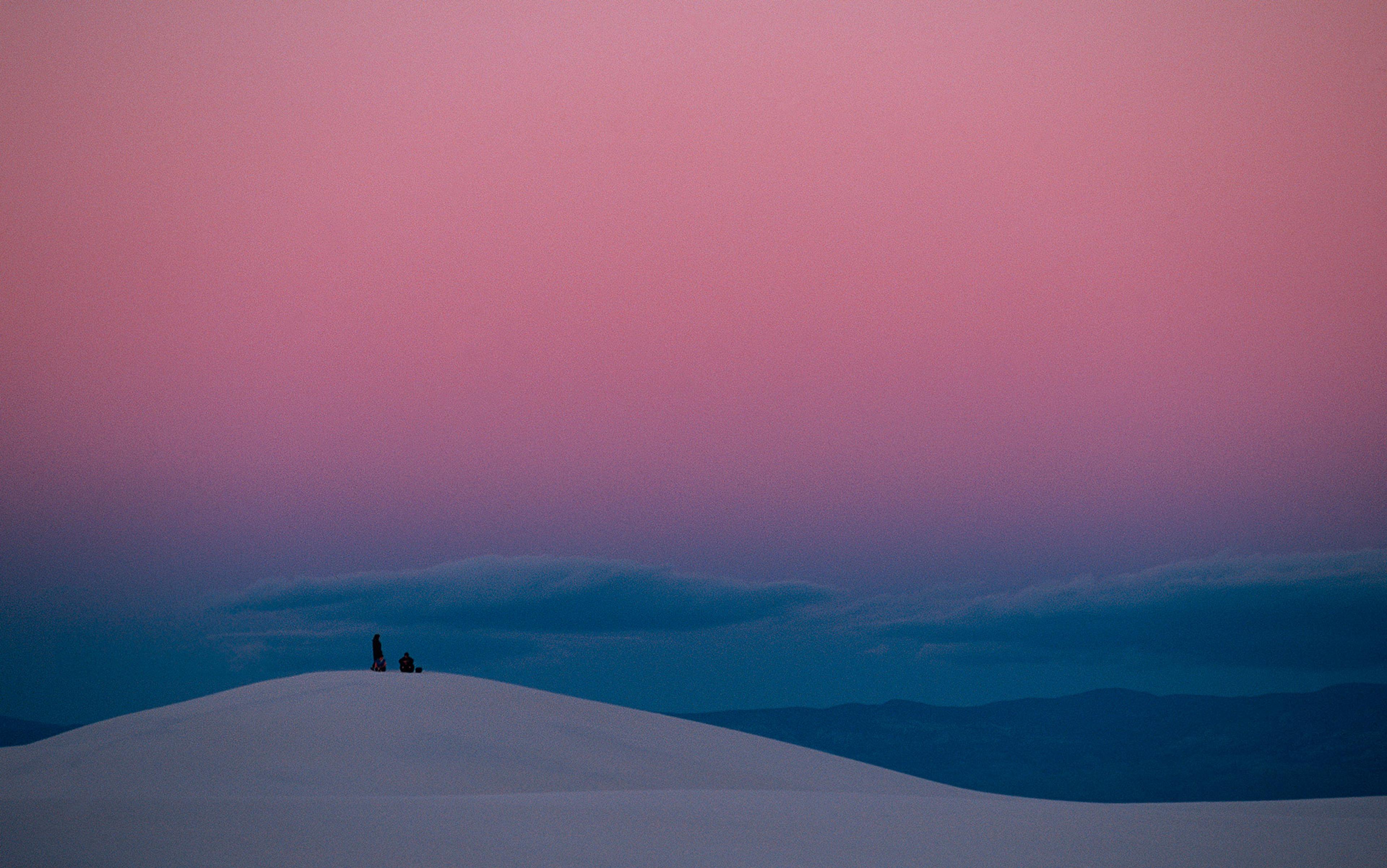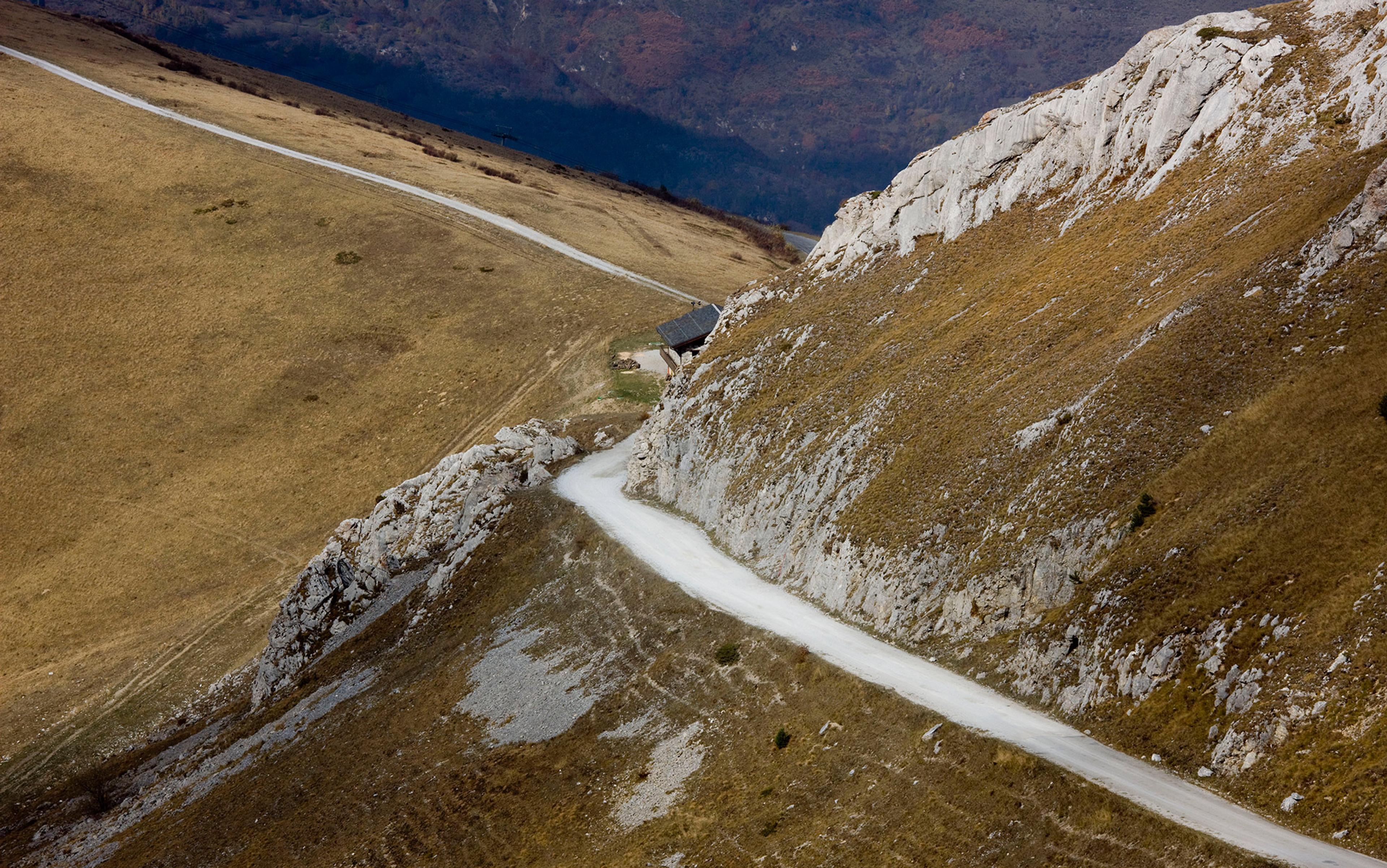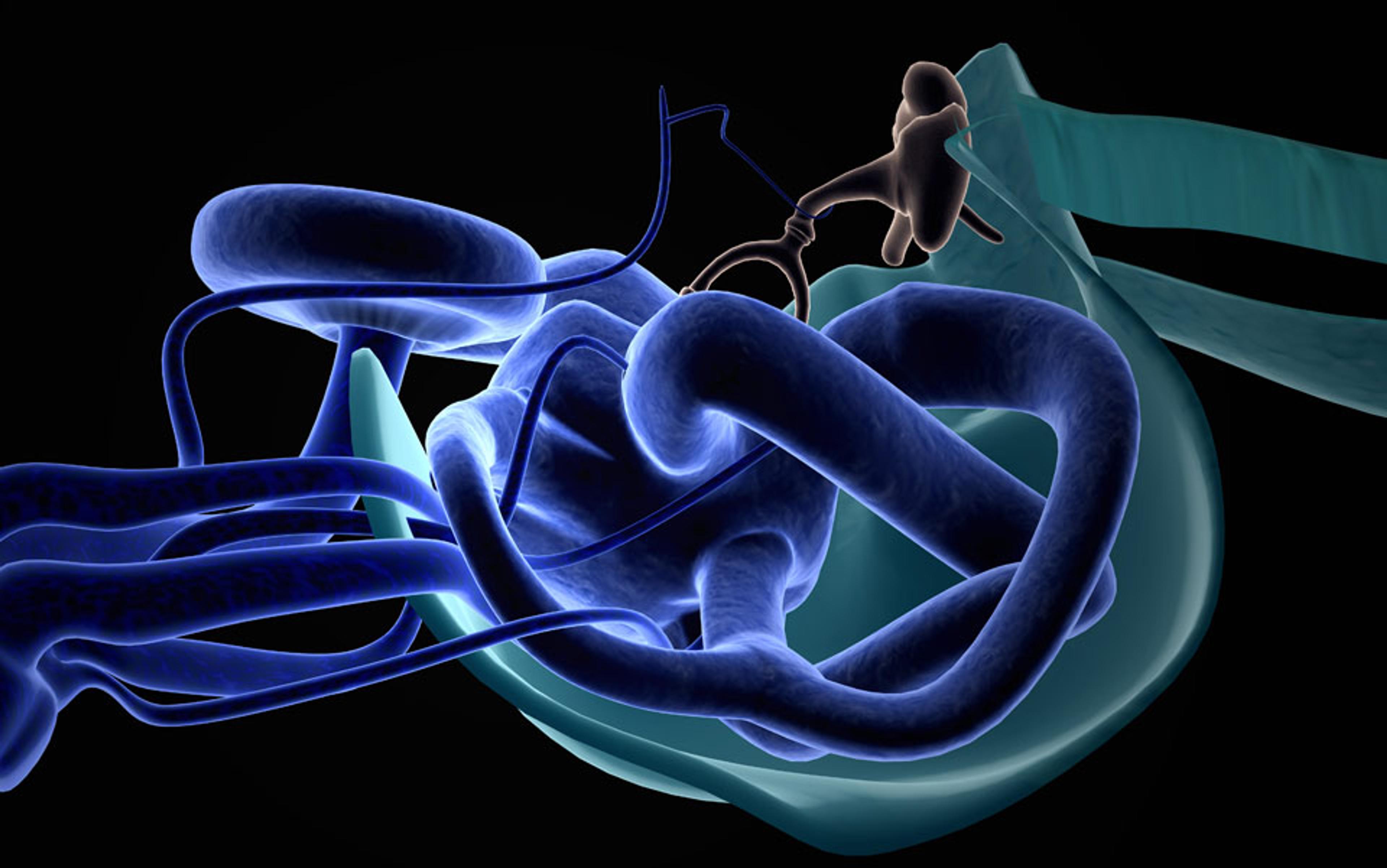On Dartmoor, in southwest England, search and rescue volunteers are regularly called out to look for people who have lost their way in the boundless wilderness. A significant proportion are Alzheimer’s patients who have wandered away from one of the many care homes on the fringes of the moor. The volunteers have noticed that Alzheimer’s patients move in a particular way across the open spaces: usually in a straight line. So resolutely do they stick to their chosen direction that they will often attempt to plunge headlong through whatever lies in their way. More than once, rescue teams on Dartmoor have retrieved elderly men from the middle of gorse thickets: they simply kept on going until they could go no further.
Alzheimer’s is commonly understood to be a disease of memory, and its effect on memory is certainly catastrophic. But more fundamentally it is a disease of orientation, a slow severing of ties with our surroundings. It particularly affects the brain’s spatial areas, such as the hippocampus and entorhinal cortex, and spatial lapses are among the very first symptoms – misplacing keys more often than usual, getting confused on a regular route or finding it impossible to learn a new one. As the illness advances, patients inhabit an ever-diminishing ‘life space’, until their confusion makes it difficult for them to go beyond their own room. Alzheimer’s sufferers who go missing on Dartmoor are lost even before they leave their homes. Their spatial awareness has collapsed to a single dimension, and they are left, literally, with nowhere to turn.
In the age of GPS, we tend to take our navigation and spatial abilities for granted, until they – or the technology – let us down. It is easy to forget that they have sustained us for tens of thousands of years. Over the course of our evolution, Homo sapiens developed an appetite for exploration and a wayfinding spirit that set us apart from previous human species. It had a huge effect on our future. One of the most intriguing recent ideas in anthropology is that our ability to navigate was essential to our success as a species, because it allowed us to cultivate extensive social networks. In prehistoric times, when people lived in small family units and spent much of their time looking for food and shelter, being able to share information with other groups about the whereabouts of resources and the movements of predators would have given us an evolutionary edge. Friends were a survival asset: if you ran out of food, you knew where to go; if you needed help on a hunt, you knew whom to ask.
Maintaining those social networks across tens or hundreds of square miles of Palaeolithic wilderness would have required navigation skills, spatial awareness, a sense of direction and the ability to store mental maps of the landscape. The Canadian anthropologist Ariane Burke believes that our ancestors developed these attributes while trying to keep in touch with their neighbours. ‘Those far-flung networks were essential to our culture,’ she told me. ‘During the Palaeolithic, there were comparatively few people around. Maintaining a spatially extensive social network was a way of ensuring your continued survival. You would need a very dynamic cognitive map, which you would constantly have to update with information about your contacts and what they were telling you about the landscape.’ In this way, the human brain became primed for wayfinding. Navigation and spatial awareness are part of our DNA.
It is likely that prehistoric humans were expert wayfinders. To help understand what they were capable of, anthropologists look to the few remaining groups that still practise the hunter-gatherer lifestyle, such as the Aché in eastern Paraguay and the !Kung in the Kalahari Desert in southern Africa. Both the Aché and the !Kung think nothing of walking a few dozen miles to exchange stories and news with other groups, though both are outclassed by the Hiwi in Venezuela, who have been known to walk 60 miles through day and night to visit a neighbouring village before walking back again a couple of hours later.
All these groups appear to rely on mental imagery for wayfinding. In many indigenous cultures, memory for routes, signs, topography, places and the names of places is essential for survival. Native Americans, before European colonisation restricted their territories, were known to have an extraordinary memory for landmarks. Colonel Richard Dodge of the US Army, who documented the social lives and customs of Native Americans in the second half of the 19th century, noted that ‘each hill and valley, each rock and clump of bushes, has for him its distinguishing features, which, once seen, he knows forever after’. As a result, ‘with no knowledge of astronomy, of geography, or of the compass, the Indian performs feats of travelling for which a white man requires all three’.
The Inuit use the winds like ancient seafarers used the stars, as a natural compass
The modern-day Inuit have a similar ability to keep a mental inventory of their surroundings. The Argentinian anthropologist Claudio Aporta, who has been studying Inuit wayfinding culture in the Canadian Arctic since 1998, has met hunters who are familiar with thousands of miles of trails, which they mark in the fresh snow every year, following routes that have not changed in generations. The routes are passed down orally and are described with reference to numerous landmarks: ice features, ocean currents, place names and, crucially, drift patterns in the snow created by winds that blow from different directions.
The Inuit use the winds like ancient seafarers used the stars, as a natural compass. They develop what anthropologists call a ‘memoryscape’ – a mental map that embodies not just a physical world but a cultural one too, in which environmental features are charged with cultural and historical meaning. This is not unlike the songlines of Aboriginal Australians, which describe in great detail the tracks of their ancestors, so that you can find your way anywhere, taking in waterholes and places of shelter, if you know the right song. Aporta has observed that even though the Inuit have lived in permanent settlements since the 1960s, they still travel extensively to hunt. Spatial habits die hard, especially when they are so fundamental to cultural identity.
Great navigators such as the Hiwi, the Inuit and Native Americans are commonly thought to have an instinctive understanding that tells them which way they are facing. A handful of researchers over the years have even claimed that humans, like birds, insects and some other mammals, can feel the Earth’s magnetic field. Disappointingly for some, there is little evidence that humans have ever possessed a directional or magnetic sense – the fact is, we don’t really need it, because our other senses are more than adequate for our wayfinding needs, at least when we attend to them. This is what people with a great sense of direction are good at. Their extra sense is simply the ability to apply all their other senses in careful observation.
Today, for most of us, the wayfinding skills of our ancestors can feel remote, even redundant. All we need do to get where we want to go is tap our destination into a smartphone and follow its instructions. Yet having a sense of place – something a GPS device will never give us – is still important. The need to know where we are, to feel safe in our surroundings, is part of the human condition. We feel this most intensely when the cognitive processes that keep us orientated go awry. The dread experienced by many Alzheimer’s patients comes from their sense of dislocation from places they used to know and a past they can no longer reach. Being lost in the wilderness triggers a comparable terror. People who have been truly lost never forget the experience. Suddenly disconnected from all that surrounds them, they are plunged into a relationship with an utterly alien world. They often believe that they are going to die.
Even a partial sense of disorientation can be highly disturbing. About 2 per cent of the population are incapable of making any kind of mental representation, or ‘cognitive map’, of their surroundings, even in places they have known their whole lives. This condition was identified around 10 years ago by Giuseppe Iaria, a neuroscientist at the University of Calgary, who named it developmental topographical disorientation (DTD). People with DTD can get from A to B if they rehearse a route and have precise instructions, but they cannot cope if something happens that requires the slightest variation in procedure. A shortcut is inconceivable for them. One sufferer, who preferred to remain anonymous, described to me the sorts of scenarios that frequently get her into trouble while driving near her home in Washington State:
If there’s construction along the route and traffic is being diverted, I’m lost. If a road has been eliminated and now I need to go another way, I’m lost. If I’m asked to stop in mid-drive to run an errand, even one that’s along that road, I’m lost. If I have to stop and pull into a side alley to take a phone call, it’s over.
One of the curious things about DTD is that, unlike with Alzheimer’s patients, the brains of sufferers show no structural damage. The problem appears to be a network glitch: Iaria has noticed that the connections between the hippocampus and prefrontal cortex are unusually poor, as if these regions, which are essential for navigation, have never learnt to communicate with each other. This tells us a lot about how the brain supports navigation: it doesn’t matter how accurate the spatial memory of the hippocampus is, or how efficient the decision-making of the prefrontal cortex is – if they don’t work together as a network, we aren’t going anywhere.
Being perpetually disoriented can have a huge impact, according to Iaria. ‘Navigation is such a fundamental skill,’ he told me. ‘Anyone who has experienced disorientation for, say, two seconds, will tell you how frustrating it is. Imagine going through it for two hours every day, or what it feels like to have it your whole life.’ DTD can end up shaping a person’s life: it can determine whom they socialise with (usually friends who live close by), which college they go to (a complex campus is out of the question) and their choice of career (in certain offices they wouldn’t even make it to the job interview). It is an isolating condition, and many sufferers keep it secret for fear of being ridiculed. In online DTD support groups, newcomers appear overjoyed at meeting others who experience the world as they do.
You can be great at assembling Ikea furniture and still fail to find your way out of the shopping centre
DTD could be a distinct condition – it seems to run in families – or it could be the extreme end of the broad spectrum of navigation abilities found in the general population. One of the central mysteries of human navigation is why some of us are so much better at it than others. Researchers who study people’s sense of direction and ability to build an inner map of their surroundings routinely report vast individual differences. ‘If you’re good, it’s surprising how fast you can learn a map-like representation of the environment,’ said Daniel Montello, a psychologist at the University of California, Santa Barbara (UCSB). ‘If you’re bad, it’s surprising how much exposure you can have and still not get it.’
Where do these striking differences in navigational skill come from? How much are they due to genetics, upbringing or experience? These are difficult questions to answer because finding your way through an unfamiliar environment engages multiple regions of the brain and involves a number of separate cognitive functions. Some of these functions, such as decision-making and attention, are crucial to navigation, for obvious reasons. Others, such as the capacity to mentally rotate a 3D shape or visualise the folding of a sheet of paper, are less so, though they can help with activities such as map-reading – if you’re able to read a map with north at the top, rather than having to physically rotate the map so that it aligns with the direction you’re facing, you’re probably good at mental rotation.
Being accomplished at one spatial function doesn’t mean you’ll excel at the rest: you can be great at assembling Ikea furniture and still fail to find your way out of the shopping centre. Having said that, skilled wayfinders tend to be competent at a whole range of tasks. They pay attention to their surroundings. They make decisions at the right times. They can recognise places they’ve visited before when viewing them from a different perspective, and are good at perspective-taking in general. They have good working memories and are able to keep track of how far they’ve travelled, how often they’ve turned and the position of landmarks. Their proficiency is reflected in their brain: the hippocampus, the area where detailed spatial information is processed, is larger than average in good navigators.
In 2016, a team of neuroscientists, psychologists, dementia researchers and games developers launched a mobile gaming app called Sea Hero Quest to investigate how people’s navigation skills vary with age, gender and other attributes. The original purpose was to find a benchmark for ‘healthy’ navigation that doctors could use to diagnose Alzheimer’s disease. It has since become the biggest ever study on individual differences in navigation abilities, with data from more than 4 million users.
The researchers, led by Hugo Spiers, a cognitive neuroscientist at University College London, and Michael Hornberger, a dementia researcher at the University of East Anglia, have made some intriguing discoveries. For example, spatial skills decline steadily by a small amount each year from the age of 19 into old age – previous research had suggested they don’t start falling off until middle age. Men are on average a little better than women at navigating – though this could be entirely due to cultural biases (women are led to believe they are worse) and early life experiences (girls are rarely encouraged to be explorers), rather than biology as is commonly understood. And people who grew up in the countryside are better navigators than those who grew up in cities, probably because the countryside presents more wayfinding challenges.
One of the more surprising observations on individual differences comes from Mary Hegarty, a colleague of Montello’s at UCSB. She has discovered that much of the variation in people’s large-scale spatial abilities can be explained by differences in personality. In a study of more than 12,000 individuals, Hegarty found that those with a strong sense of direction also scored highly on measures of extraversion, conscientiousness and openness, and low on neuroticism. If you think about it, this makes sense. Energy and enthusiasm (extraversion), diligence and attention to detail (conscientiousness) and curiosity and ingenuity (openness) are all useful qualities to have when you’re trying to find your way, because they force you to engage with what’s around you. Anxiety and emotional instability (neuroticism) you could do without. If you are animated, self-disciplined, adventurous and confident, you are far less likely to get lost than if you are reserved, scatterbrained, closed-minded and phobic. If you’re neurotic, you’ll also be less inclined to explore new places, and so will lose out on the opportunity to increase your spatial confidence.
If personality were to remain stable over a lifetime, as some have long believed, then it might be difficult for poor navigators to improve. Fortunately, this is not the case. For one thing, personality changes with life experience. Another consideration is that personality is not the only driver of behaviour. Much depends on context: who I am with, what my emotional state is, where I happen to be. People who seem self-possessed in familiar places can be overwrought when facing the unknown. When we’re navigating, many things can affect our performance, some of which – working memory, spatial awareness, map-reading skills and so on – are easily improved. This means that you can be introverted and still be a good navigator, or conscientious and still be a poor one. Anxiety is the wayfinder’s greatest enemy, but the more you do it, the better you’ll get and the more confident you’ll become. There’s no denying the huge differences in people’s navigation skills, but it’s wise to view this as an opportunity rather than a condemnation. ‘Can most people get better?’ Montello asks. ‘I’m sure that’s true.’
When we don’t know where we are, we lose a sense of who we are
Proficiency in wayfinding can bring great freedoms – a licence to explore without fear, or to start journeys without knowing how they will end. But there’s another reason why we might wish to keep exercising our spatial skills, rather than always delegating the heavy lifting to our smartphones. The hippocampus – the brain’s ‘navigation motherboard’ – does much more than orientate us in physical space. It is also crucial to many aspects of autobiographical memory. Space and memory are closely intertwined in the brain: the hippocampus appears to use memories of places as a kind of scaffolding on which to organise other memories. Patients with hippocampal damage not only have trouble navigating, they also struggle to remember things that have happened to them. Experiential memories require a spatial context: it’s difficult to recall an event without recalling where it happened.
The hippocampus even drives aspects of our cognition that, on the surface, have little to do with physical space. Recent experiments have shown that the same neuronal networks that enable the brain to build cognitive maps of places are instrumental in solving many abstract problems, such as understanding power relationships in a social group, or semantic relationships in a list of words. The hippocampus is a universal map-maker, as good at helping us navigate our inner worlds as our outer ones. Keeping it active is the road to cognitive riches, and one of the best ways to do this is to pay attention to where we’re going, to navigate using our wits rather than our smartphones.
There’s little doubt that our spatial smarts are integral to many crucial cognitive functions. When they fail us, we lose more than our coordinates in space. When we don’t know where we are, we lose a sense of who we are. Disorientation is as much a psychological condition as a physical one. Cut off from the world, we struggle to stay afloat. ‘On bad days, there is a fuzziness, similar to the way the picture on the telly looks when it starts to break up, making it harder to decipher,’ writes Wendy Mitchell in Somebody I Used to Know (2018), a memoir of her own progressing dementia. ‘A fog descends, confusion reigns and there is no clarity from the moment I open my eyes. Where am I?’
Remarkably, given their limited spatial horizons, dementia patients have a propensity to wander. Wandering has long been seen as part of the pathology of the disease. Doctors, carers and relatives often try to prevent patients from venturing out alone, out of concern that they will injure themselves or won’t remember the way back. Yet wandering might instead be a therapeutic response to dementia. Many in the care profession believe that patients wander purposefully. They might be walking to stay alive. Sat in a chair in a room they don’t recognise, with a past they can’t access, it can be a struggle for them to know who they are. But when they move, they are once again wayfinders, engaging in one of the oldest human endeavours, and anything is possible.
My grandmother, in the final weeks of her life when she was affected by dementia, repeatedly used the phrase ‘Am I here?’ I used to wonder what she meant by it. It’s a question with several possible meanings. The most obvious way to ask it is with your finger on a map, or with a certain location in mind. Yet the experience of a place can never be explained in coordinates, or even in terms of the firing patterns of your spatial neurons. You know where you are only if you can tell a story about that place or remember how you found your way there. In the end, I believe my grandmother was questioning the history of her relationship with the room she was in, and perhaps whether she existed at all. In many ways, it is the ultimate question, one that all of us might ask at some point in our lives. Am I here? We want to hope so. What could matter more?
